Erika Lacava: Today we cannot always speak of a fixed workspace for a photographer, but I believe that the manipulation of your works and the profound reflection that accompanies them need a study.
Pierluigi Fresia: Yes, my photography leads me to spend several hours in the studio searching for images, writing, cataloging. The study becomes a point in which I can coagulate the ideas of the day, a way to bring them to maturity and fulfillment. I have always had a studio, first separated from home, then joined to home, following the moving house, thanks to the greater space here available. And I must say that in this period of quarantine it was a fortune.
E.L. Do you want to tell us about the way you worked during this Covid period?
P.F. During this time I spent more hours in the studio, but generally when you have too much time you waste it! So I tried not to overdo it. Not being able to go out to take new photos, I recovered shots of two, three years ago, that now took on a new meaning. My work is always like this: I get the material from the archive, I rework things that have settled over time. Having no short-term plans (the last one exhibition was Bologna Fair with VisionQuesT4rosso) I was able to work more autonomously, without a deadline and without tension. Only in this way experiments can be allowed. I also painted, as I did in the old days.
E.L. What projects have you developed?
P.F. I worked a lot with the blackboard because it is on site. I worked on a new project, “JV”, which takes its cue from a reflection on the lines of force and the trajectories at the base of Vermeer’s paintings, which give an idea of paralysis, of suspended light. The work with the blackboard is very quick: tripod shooting, development in a clear room, return to the blackboard etc.
E.L. But it is also a slow process, which gives a methodical idea of your way of working. Do you work at a constant pace and at set times?
P.F. No, I never set schedules. Sometimes I come to the studio and don’t work at all, I sit and read, or think. I never plan work, I’m a mentally disordered guy. When I get caught up in a project, I work straight away. Then I put the photos to the next day test.
E.L. Do you want to talk about the “Specific objects” project you have recently joined?
P.F. “Specific objects” is a project developed by Caterina Filippini that opened a space in Turin that deals not with finished works of art but with what is there before the work: sketches, notebooks, proofs of the artist. Caterina went to the studio before the quarantine period, rummaged in the drawers and pulled out notebooks, both recent and ten years old. Seeing my old works broughts back themes that I had forgotten, but which with a karst effect had always remained there, hidden. I have always looked with amazement at artists who change frequently because I am convinced that the themes to which we are linked sooner or later return. We always go back to the same point.
E.L. What are the themes or modalities that in those notebooks you recognized as typical of your making art?
P.F. In the pencil sketches I found shots that I still use today, in addition to the positioning of the subjects and their type, which have moved from painting to photographic works. I had forgotten that I had met them lots of years ago, and they still amaze me today. It is like stopping to observe the same thing as if it were new, it is a rediscovery each time the same and different, as if my mind found the cardinal points to lean on.
E.L. For the “Autoprogettazione” format by Galleria Milano you presented a project with these instructions: “Look at the image reflected in the mirror of the clock face motionless, so you will have the opportunity to see a space in which time runs backwards. The longer the observation, the more sensitive the sweet taste of your eternity will be. “
P.F. My intention was to rewind, to collect time like tape in the old cassettes, to be able to go back and recover a wrong step. The concept of time backward was also present years ago in an exhibition at the Galleria Martano in Turin: in each of the three rooms I had placed a clock that indicated an hour calculated on the basis of the average time that a spectator used to cross the previous room, so as to give the illusion that time on display had stopped. For “Autoprogettazione” I wanted to create a small time machine available to everyone, to be built simply with a clock and a mirror. In the mirror in which the clock hand is reflected backwards, another space opens up, another room in which time goes back, and in which you also live.
Info:
Pierluigi Fresia (Asti, 1962) lives and works in the Turin area. Always referring to the conceptual, his research has employed different media: painting, video and photography (sometimes in a multimedia key), often including the use of the word. He has had numerous solo exhibitions, among others in Turin at the Galleria Martano, in Milan at the Galleria Milano, in Genoa at the Vision QuesT4rosso, in Bologna at the Galleria Studio G7. His works are in private foundations and museums, including MART in Rovereto, GAM in Turin, MET in New York.
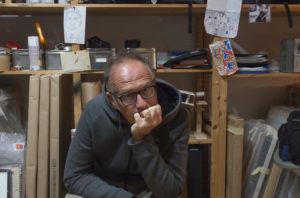
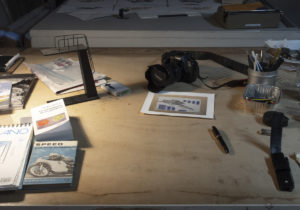
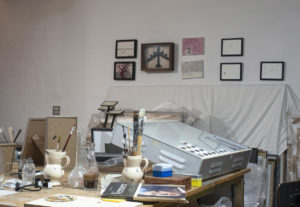
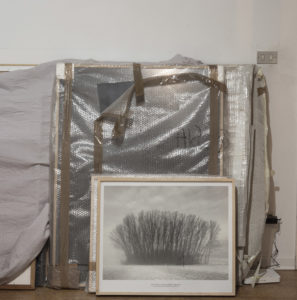
For all the images: Pierluigi Fresia’s studio. Image courtesy the Artist
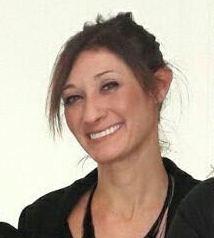
Erika Lacava, degree in Aesthetic Philosophy at the State University in Milan with a specialization in Visual cultures and curatorial practices at the Brera Academy. From 2014 to 2017 with the experience of Zoia – Contemporary Art Gallery she comes into direct contact with the dynamics of scouting and the art market. Independent curator, collaborator for printed and online art magazines, in 2019 she founded the communication and services start-up for art M2F Communication.






NO COMMENT